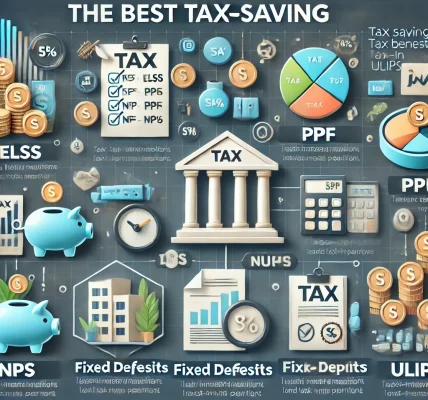Saving plans are crucial tools in achieving financial security, yet despite their importance, they are often surrounded by misconceptions. These myths can mislead individuals, causing them to overlook the benefits or avoid saving altogether. In this blog post, we’ll debunk some of the most common myths about saving plans, helping you make more informed decisions about your financial future.
Myth #1: Saving Plans Are Only for People with High Incomes
One of the most pervasive myths is that saving plans are only for people with high incomes. Many believe that unless you earn a large salary, it’s impossible to put money into a saving plan. This couldn’t be further from the truth.
Reality:
Saving plans are designed to help people of all income levels. You don’t need to have a high income to start saving. In fact, starting early, even with small contributions, can lead to substantial growth over time due to the power of compound interest.
- Solution: If you have a modest income, consider starting with a recurring deposit (RD) or a low-minimum-investment SIP that fits your budget. Even small, consistent contributions can help you build a solid financial foundation.
Myth #2: Saving Plans Offer Low Returns and Are Not Worth the Effort
Many people believe that saving plans, especially traditional ones, offer low returns, which make them unworthy of investment. They often assume that their money won’t grow significantly in such plans.
Reality:
While it’s true that some low-risk saving plans (like savings accounts or fixed deposits) may offer modest returns, many saving plans provide competitive returns, especially when compared to the inflation rate. There are market-linked saving plans, such as SIPs and mutual funds, that can offer higher returns over the long term.
- Solution: Research different saving plans to find the best option for your risk tolerance and investment horizon. Diversifying your investments between fixed and market-linked plans can balance both safety and growth.
Myth #3: You Need to Lock Your Money for Years in Saving Plans
A common misconception is that saving plans require you to lock your money away for years, making them inflexible and inconvenient for people who might need quick access to their funds.
Reality:
Not all saving plans require long-term commitments. While some plans, such as PPF or tax-saving fixed deposits, have lock-in periods, many other plans allow for short-term access or flexible withdrawal options.
- Solution: Look for saving plans with shorter lock-in periods or those that offer easy access to your funds when needed. Liquid funds or recurring deposits can provide more flexibility while still offering reasonable returns.
Myth #4: Saving Plans Are Only for Specific Financial Goals (e.g., Retirement)
Many people believe that saving plans are only meant for specific goals, like retirement or buying a house, and are not useful for general savings or unexpected expenses.
Reality:
While saving plans are often used for long-term financial goals, they are equally effective for emergency funds, vacations, and other short- or medium-term goals. In fact, creating a well-rounded saving plan allows you to address multiple financial goals simultaneously.
- Solution: Create multiple saving plans for different purposes. A mix of plans designed for short-term goals (e.g., an emergency fund) and long-term goals (e.g., retirement) can help you stay on track and remain financially secure in various aspects of life.
Myth #5: You Should Always Choose High-Risk Plans for Higher Returns
Some investors believe that in order to get higher returns, they must invest in high-risk plans, even if they don’t fully understand the risks involved.
Reality:
While high-risk investments such as stocks or equity mutual funds can provide high returns, they also come with the potential for significant losses. Saving plans are typically designed to be low- to moderate-risk investments, making them safer for those who want to avoid market volatility.
- Solution: It’s essential to match your risk tolerance to your saving plan. If you’re risk-averse, choose low-risk plans like fixed deposits or public provident funds (PPF). If you’re comfortable with some risk, SIPs and mutual funds can provide higher returns with long-term growth potential.
Myth #6: Saving Plans Are Too Complicated to Understand
Many people are intimidated by saving plans because they believe that the terms, options, and details are too complicated to grasp. This fear of complexity prevents them from investing altogether.
Reality:
Saving plans can be quite simple, especially if you take the time to educate yourself on the different types of plans available. In fact, there are many online calculators and tools to help you understand how different plans work and how much you need to save to meet your goals.
- Solution: Take advantage of online resources, such as financial calculators or consult a financial advisor, to make sure you understand the plan you are choosing. Most saving plans offer clear terms, and many financial institutions have customer service teams to assist you with any questions.
Myth #7: You Can Only Invest in One Saving Plan
Some people believe that they can only invest in one saving plan at a time and that choosing the “best” plan will maximize their returns.
Reality:
You can invest in multiple saving plans at once, diversifying your portfolio to balance risk and returns. For example, you might choose a high-interest FD for short-term goals and an SIP for long-term goals, ensuring that you’re making the most of both fixed returns and market-linked growth.
- Solution: Diversify your investments by combining different types of saving plans based on your goals, time horizon, and risk appetite.
Myth #8: Saving Plans Are Only for the Risk-Averse
Some believe that saving plans are for people who are overly cautious and unwilling to take any risks, making them seem less appealing to adventurous investors or those seeking high growth.
Reality:
Saving plans are not just for the risk-averse. Many plans offer a mix of safety and growth potential, making them suitable for both conservative and risk-tolerant individuals. You can choose market-linked plans that offer higher growth potential while maintaining a safer portfolio with fixed plans.
- Solution: Choose a combination of safe and growth-oriented plans that align with your long-term financial goals. Explore options such as balanced mutual funds or hybrid SIPs that give you a mix of both.
Conclusion:
Understanding saving plans is crucial to achieving your financial goals, whether you’re saving for retirement, an emergency fund, or your dream vacation. By debunking these common myths, you can make more informed decisions and choose the right saving plan that aligns with your needs. Remember, there’s no one-size-fits-all approach—find the plan that works for you and get started today!



